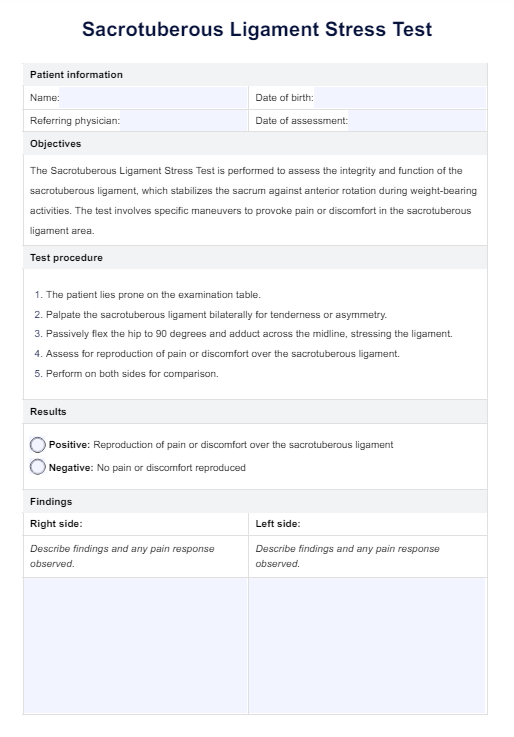What is a sacrotuberous ligament strain?
A sacrotuberous ligament strain occurs when this thick band of tissue connecting the sacrum to the ischium bone in the pelvis is stretched or torn due to vigorous or repetitive activities such as high jumping, golfing, gymnastics, pitching, or volleyball spiking. This injury can result in significant discomfort, often characterized by pain in the buttocks region.
The sacrotuberous ligament plays a crucial role in stabilizing the sacrum against forward tipping when pressure is applied to the spine, making it particularly susceptible to stress during activities involving excessive lower back arching.
Symptoms of this type of strain
The symptoms of a sacrotuberous ligament strain include:
- Sacroiliac joint pain: Pain around the sacroiliac joint, often felt deep in the buttocks or lower back.
- Pelvic girdle pain: The pelvic region's discomfort affects mobility and daily activities.
- Posterior sacroiliac ligament pain: Pain in the ligaments at the back of the sacroiliac joint.
- Difficulty in sacroiliac joint dysfunction: Issues with the joint's function, leading to instability or limited range of motion.
Causes of this strain
The causes of a sacrotuberous ligament strain typically involve activities that place excessive stress on the ligament. Key factors include:
- Vigorous or repetitive sports activities: Such as high jumping, golfing, gymnastics, pitching, and volleyball spiking, which involve sudden movements or repetitive motions that strain the ligament.
- Excessive arching of the lower back: Activities that require significant extension of the lower back can stress the sacrotuberous ligament, such as during certain yoga poses or weightlifting maneuvers.
- Direct trauma: A fall or impact to the buttocks or pelvis can also cause strain or partial tearing of the ligament.












